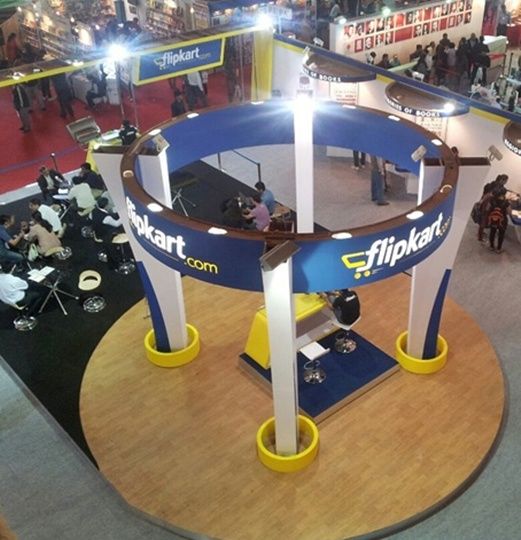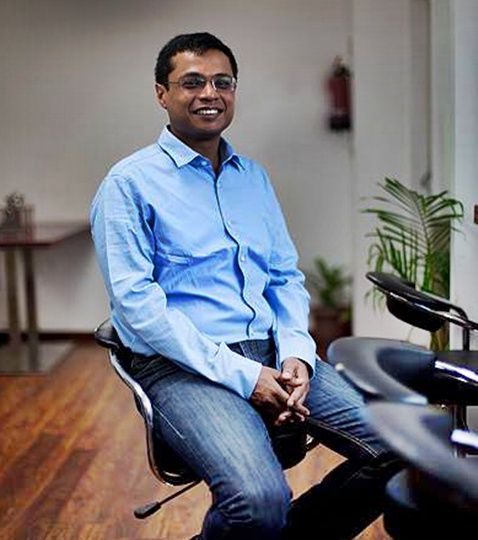 E-commerce firm Flipkart, whose current valuation is an estimated $12 billion, is going all out to make its technology more robust in 2015.
E-commerce firm Flipkart, whose current valuation is an estimated $12 billion, is going all out to make its technology more robust in 2015.
While it has started work to ensure a glitch-free 'Big Billion Day' in October, it also aims to offer high-speed delivery that is close to real-time shopping experience - through investments in technology.
Flipkart, learnt to be planning for an initial public offering in 18 months, is looking to double its technology team during this period.
Launched in 2007, Flipkart is yet to make a profit and continues to be in a growth phase.
Its chief executive and co-founder, Sachin Bansal, tells Nivedita Mookerji how he expects the technology focus to help the firm compete with global players and big Indian business houses venturing online, besides other domestic e-tail rivals.
Edited excerpts:
Technology is the backbone for any e-commerce firm. What does Flipkart want to do in 2015 to make its technology more robust and better than rivals?
We are a tech company at our core. We are looking to solve problems around three broad areas.
First, we are creating a better user experience and more innovation in our mobile-app offerings. Given that a lot of our mobile customers come from Tier-II and -III cities, we will improve the user experience for everyone, even those on slow or patchy networks.
Second, we are improving the seller experience. We have thousands of SMEs (small and medium enterprises) joining us every week as sellers. We are creating new tools to make it transparent and easy for everyone to sell online, even the most traditional artisans.
Third, we are strengthening our supply chain. As our marketplace expands, we will need to concentrate and invest in creating a more robust back-end system.
Greater automation in warehouses and logistics, for example, will help us speed up the process from order to delivery - and bring online shopping a step closer to real-time shopping experience.
You mention a high number of customers from Tier-II and -III cities who shop through their mobile phones. How large is that user base?
Over 60 per cent of our mobile customers are from these cities.
To focus on the three broad technology areas, will Flipkart look to acquire companies in these niche areas? Can we expect technology-related M&A (merger & acquisition) deals in 2015?
Definitely, technology (both in terms of teams and products) will be an important focus area for us this year in so far as M&As are concerned.
What kind of investment is being looked at for making Flipkart a technologically robust company? Do you need to raise more funds this year or is Flipkart well-funded for now?
We cannot comment on specific investments. But a large chunk of our investments are in the area of technology. These could be related to developing talent, investing in technology for the back end or in creating in-house tech products for the market.
 In terms of hiring, how many engineers are likely to be added to the tech team during 2015? How big is this team at present, and by how much will it grow?
In terms of hiring, how many engineers are likely to be added to the tech team during 2015? How big is this team at present, and by how much will it grow?
We have nearly 1,000 people in our technology team currently. While we are recruiting across the board very actively this year, tech talent will definitely be a focus area. We will look at doubling the strength over the next 12-18 months.
What is the company's total employee strength? What will it be after the tech team has doubled in 12 to 18 months?
Currently, our total team strength is 33,000. We do not have a fixed target for the overall team expansion. It will depend on our business requirements.
Is Flipkart hiring in a significant way from Silicon Valley? Can you indicate the number of people that Flipkart has on its rolls from there?
We look to hire the people who, along with a deep domain expertise, are high on impact and ownership.
We have a great mix of people - from fresh graduates from colleges to those who have worked with leading organisations around the world, including Silicon Valley.
This diversity works well for us. We have nearly a dozen key senior people from the Valley who have joined Flipkart in the past couple of years. These are mostly in the technology space, with a few key hires in other areas.
Last year's 'Big Billion Day' sale was all about technology. Has Flipkart begun preparations for the next edition? Is it doing things differently this year to ensure the problems faced last year do not recur?
On the technology front, we had a fair share of learning from the 'Big Billion Day' last year.
There were some glitches but we have already made significant progress and used this learning to scale up our technology and supply-chain backbone, to strengthen our demand-predictive capability and make the 2015 version bigger and smoother.
Will the 2015 version of 'Big Billion Day' have the same name?
'Big Billion Day' has been developed as an annual property and we will continue to use that name going forward.
What will it take for Flipkart to strengthen its demand-predictive capability?
We have developed in-house algorithms that help us track trends depending on geographies, customer demographics and seasonal trends.
We are constantly working on making these algorithms more sophisticated and, thereby, more mature. This will help us make more accurate predictions about sales expectations before large-scale events.
That will, in turn, influence the inventory and pricing intelligence we share with our sellers.
Do you find the marketplace model technologically superior to the inventory-led format which you had begun with? Has Alibaba shown the way?
It is not about what is a superior model but about what is better suited for a developing economy like India. Marketplace helps us scale faster.
It also helps us provide business opportunity to thousands of entrepreneurs and artisans across the country. Customers, meanwhile, get access to millions of products from across the country, something not easily achieved in an inventory-led model.
What is undeniable, though, is that the range and complexity of technology employed in a marketplace is far more extensive.
In a marketplace, as the scale of business expands rapidly, the technology platform also needs to expand and mature to keep pace.
Marketplaces are more suited for a technology-enabled ecosystem, something that we at Flipkart are building.
You are talking of scaling faster using the marketplace model. Does that mean Flipkart wants to continue focusing on growth, and not looking at profitability?
As I said before, the marketplace model is the best suited for a developing economy like India.
The potential that the Indian e-commerce market has is immense. And, the rapid scale of expansion and growth a marketplace can help us achieve (in terms of sellers, products, markets) is unparalleled.
Our focus at present is definitely on growing our business, and it is only natural that we will follow a model that fits our goals and also serves up the best experience to our customers.











